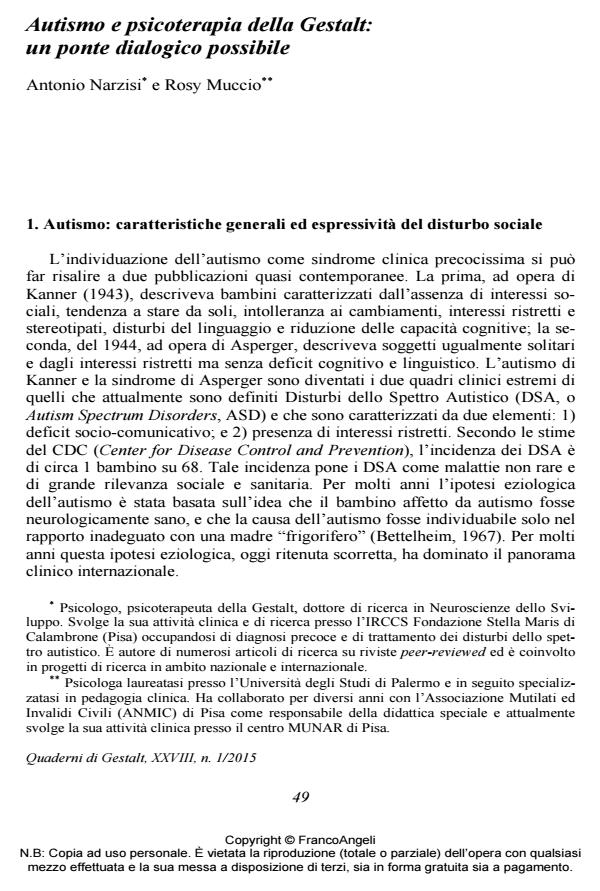Autismo e psicoterapia della Gestalt: un ponte dialogico possibile
Journal title QUADERNI DI GESTALT
Author/s Antonio Narzisi, Rosy Muccio
Publishing Year 2016 Issue 2015/1
Language Italian Pages 13 P. 49-61 File size 83 KB
DOI 10.3280/GEST2015-001004
DOI is like a bar code for intellectual property: to have more infomation
click here
Below, you can see the article first page
If you want to buy this article in PDF format, you can do it, following the instructions to buy download credits

FrancoAngeli is member of Publishers International Linking Association, Inc (PILA), a not-for-profit association which run the CrossRef service enabling links to and from online scholarly content.
Autism and Gestalt Therapy: a Feasible Dialogical Bridge - Antonio Narzisi, Rosy Muccio The main objectives of this study are: (a) to describe the clinical features of autism spectrum disorders to try to build a dialogical bridge with the Gestalt psychotherapy and (b) to start to develop a hermeneutic reading of the autism spectrum disorders according to the theory of Gestalt psychotherapy.
Keywords: Autism, Gestalt, diagnosis, treatment, infancy.
- Riflessioni sulla dimensione spirituale nell'autismo: tra ipersensorialità e ridotta influenza dei priors cognitivi Antonio Narzisi, in QUADERNI DI GESTALT 2/2018 pp.57
DOI: 10.3280/GEST2017-002004
Antonio Narzisi, Rosy Muccio, Autismo e psicoterapia della Gestalt: un ponte dialogico possibile in "QUADERNI DI GESTALT" 1/2015, pp 49-61, DOI: 10.3280/GEST2015-001004